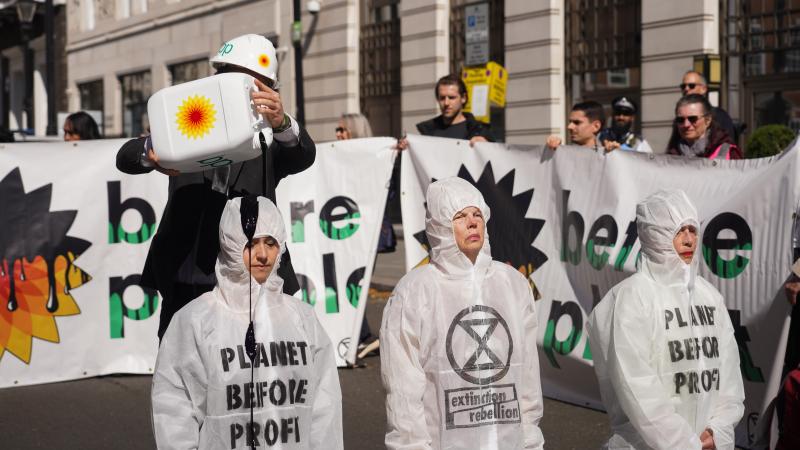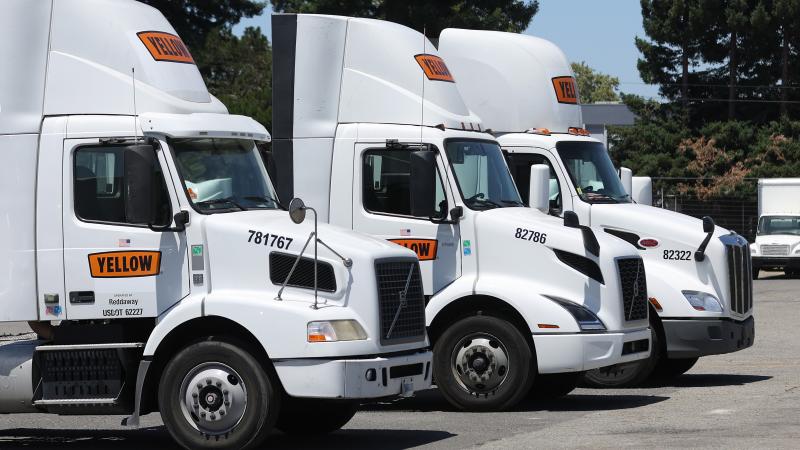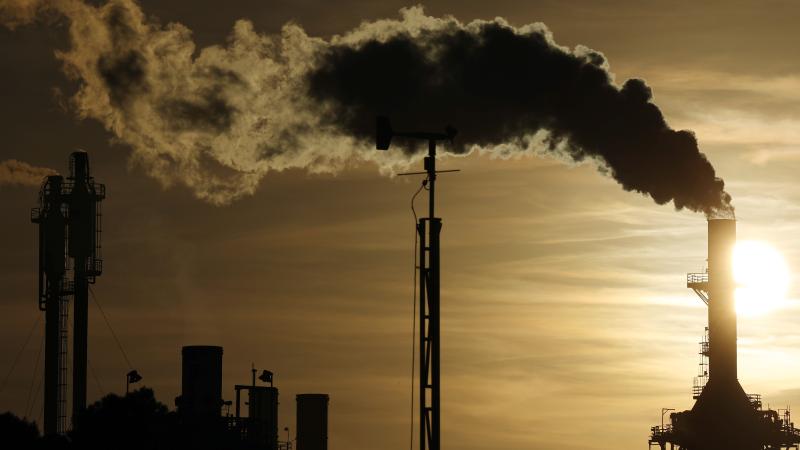California is winning the war on 'Big Oil,' but experts say victory will bring higher gas prices
Valero Energy Corporation announced it will close its Benicia Refinery, which joins an exodus of oil companies leaving the state. Making up the lost refining capacity will come with steep costs at the pump.
Valero Energy Corporation has announced it will idle or close its Benicia Refinery in California – just the latest in the exodus of fossil fuel companies from the state.
Six months ago, Phillips 66 announced the closure of its Los Angeles-area refinery by the end of this year – it’s since bumped the date up to October — and a few months before that, Chevron announced it would be moving its headquarters from San Ramon, California, to Houston.
After the two refineries close, it’s not clear exactly where California will find more gasoline and other finished petroleum products, such as jet fuel, to satisfy demand.
All the options at the state’s disposal are expensive. Residents of the Golden State already pay the highest gasoline prices in the nation, and the state’s lawmakers show no sign of reversing course on their anti-fossil fuel agenda, driving away the state's petroleum industry.
Warnings ignored
Over the past several years, Democratic Gov. Gavin Newsom signed into law several rules unwelcoming to the state’s oil and gas industry, on the belief that such companies are bad actors. Last October, he proposed a law that would require petroleum refiners in the state to maintain a minimum fuel reserve to prevent shortages that cause gasoline price spikes.
In an announcement on the proposal, Newsom blamed oil companies for high gasoline prices and promised further regulation of the industry would solve the problem for residents.
Arizona Gov. Katie Hobbs, a fellow Democrat, and Nevada Gov. Joe Lombardo, a Republican, whose states border California, sent a joint letter to Newsom urging him not to sign the refinery regulations into law, arguing it would lead to gasoline price spikes and shortages.
Their warnings, along with those from many other critics, were ignored. Two days after Newsom signed the law, Phillips 66 announced it was shutting down its Los Angeles refinery.
Michael Mische, a University of Southern California professor and management consultant, told Just the News that the Valero closure, expected to happen by Saturday, is no surprise considering the regulatory environment in which petroleum companies have to work. The loss will reduce California’s refining capacity by 22%.
“It’s a fifth of the capacity you’re taking out of circulation," Mische said. "Demand is not going to come down, so there’ll be a significant gap between supply of gasoline versus demand.”
The state consumes about 33 million gallons of gasoline per day, Mische said, and almost all of it is produced by in-state refineries. In 2035, California's electric-vehicle mandate will kick in, banning the sale of all gas-powered cars in the state. And Mische suspects that other refineries will soon join the exodus.
“This is all legislative," he said. "These refiners have no incentive to stay in the state. They have no incentive to invest."
Chevron has two refineries operating in California, which combined account for nearly 40% of the state’s refining capacity. However, Mische said only about 3% of Chevron’s sales are generated in California.
“There's no real compelling reason for them to stay past 2030. And personally, I think they're next,” he said.
Mike Vomund, Chevron’s vice president of fuels, told KCRA 3 last week the state’s policies over the last 20 years have made it difficult for the oil industry to operate. He wouldn’t speculate on what might happen down the road, but he said that the state’s lawmakers are making it “un-investable.”
Import options
Once Valero and Phillips 66 shut down their refineries, the state will have to figure out where to source its petroleum products. Mische said the state really has only two options – Washington state and the Gulf Coast. There are no pipelines to bring in the products, so California will have to transport the fuels via maritime vessels.
Rail is expensive, Mische said, and a tanker vessel can move 2 million gallons of gasoline per voyage. A vessel from Washington takes three to five days, and ships from the Gulf Coast, which would need to travel through the Panama Canal, would take up to 12 days.
“You’re going to add to greenhouse gas emissions, which ostensibly, this whole thing is about greenhouse gas emissions,” he said.
It is possible, Mische said, that a refinery in Alaska might help California make up its petroleum deficit that will come when the refineries start to close, but it will most likely be Washington.
Wherever the fuel comes from, its transportation will add more costs to the price that California drivers pay at the pump.
The U.S. is divided up into seven Petroleum Administration for Defense Districts (PADD). California is in PADD 5, which includes Alaska, Arizona, Hawaii, Nevada, Oregon, and Washington. There are 26 refineries in PADD 5, 14 of which are in California, accounting for 64% of the PADD’s refining output. That will soon be 12.
Limited capacity
Mische said it’s hard to say for sure which refineries, if any, will be willing to make up for the loss of two California refineries. He’s attempting to crunch the numbers to determine what options are available to the state, but refineries don’t have a lot of extra capacity to offer.
The U.S. hasn’t built a new major refinery since the 1970s, and no refinery built since then has had a capacity larger than 42,500 barrels per day. Some of those refineries have expanded capacity, but the only one built in California since the 1980s is a refinery near Bakersfield, which produces 1,700 barrels per day of asphalt products.
“The numbers aren't feeling right to me,” Mische said.
Should California find a refinery with the capacity to make up the deficit, it’s unclear whether one would be willing to produce California-compliant fuel. California uses its own special blend of fuel, which limits production to a handful of refineries in California and in Washington state.
“If I'm only looking at producing a couple million gallons a day, and I'm a really large refinery, am I going to mess around with California? "It's just, it's just not in my economic interest to do that,” Mische said.
If a refinery agrees to produce California gas, they’re likely going to charge a lot for the service. That means, Mische said, that on top of the already high cost of gas in California, drivers will likely see some steep increases.
No retreat
Mische said that he doesn’t see lawmakers reacting to these projected increases with much more than apathy. For California’s anti-fossil fuel politicians, an increase in gasoline costs will only help force consumers to switch to EVs.
Another possibility is that the state takes over the closing refineries. The California Energy Commission proposed this idea before Valero and Phillips 66 announced their exit.
“That's what Venezuela did, and we all know how successful that was,” Mische said.
In 2009, when then-Venezuelan President Hugo Chavez expropriated the state’s petroleum assets, oil production fell by 50%, providing a case-study in state-run industries.
“It's not as easy as it sounds, but I'm sure that there are a number of folks up in Sacramento. They're thinking it's probably the answer to their problems,” Mische said.
As California lawmakers contemplate a state-run refinery industry, a retreat from the policies that are driving companies away doesn’t appear to be an option on the table for the foreseeable future.
The Facts Inside Our Reporter's Notebook
Links
- idle or close its Benicia Refinery
- Phillips 66 announced
- bumped the date up to this October
- Chevron announced
- highest gasoline prices in the nation
- several rules unwelcoming
- announcement on the proposal
- letter
- along with many other critics
- Michael Mische
- two refineries operating in California
- told KCRA 3
- seven Petroleum Administration for Defense Districts
- built a new major refinery since the 1970s
- California Energy Commission proposed this idea
- oil production fell by 50%














